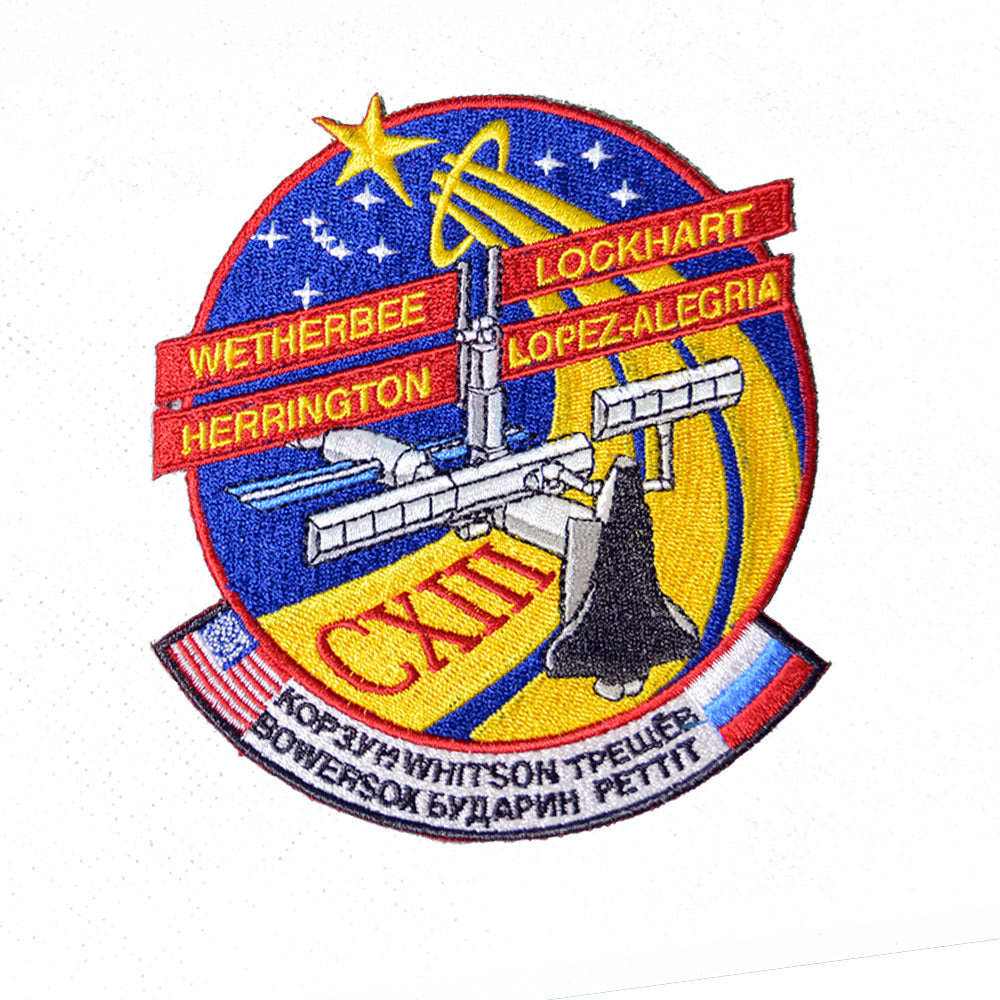
STS-113 Patch
Mission Highlights
Over the course of the 14-day mission, the STS-113 crew and the Expedition Six crew combined to install the new P1 truss to the International Space Station, perform three spacewalks to outfit and activate the truss, and transfer supplies and equipment between the two spacecraft. Endeavour brought more than 2,500 pounds of material to the station.
Among the transfer were science experiments, the PCG-STES and PGBA returning to Earth and the PCG-STES Unit 10 moving onto the station.
While Endeavour was docked to the space station, Expedition 5 NASA Science Officer Peggy Whitson and Expedition 6 Commander Ken Bowersox replaced two valves and cleared debris from vent lines of the Carbon Dioxide Removal Asembly (CDRA) in the station’s U.S. Destiny Laboratory.
Prior to the first spacewalk, Commander Jim Wetherbee removed the P1 truss from Endeavour’s payload bay, using the shuttle’s robotic arm, and handed it off to the station’s Canadarm2. Whitson and Bowersox maneuvered the P1 to its installation position.
EVA No. 1: 6 hours, 45 minutes — Mission Specialists Michael Lopez-Alegria and John Herrington hooked up electrical connections between the P1 truss and station, installed spool positioning devices that will ensure quick disconnect devices in fluid lines function properly, and released launch locks on the Crew and Equipment Translation Aid (CETA) cart. They also installed Node Wireless video system External Transceiver Assembly (WETA) antennas allowing reception from spacewalkers’ helmet cameras without a shuttle present.
EVA No. 2: 6 hours, 10 minutes — On Thanksgiving Day, Lopez-Alegria and Herrington connected two fluid jumpers between the P1 and S0 trusses, linking plumbing for ammonia in the station’s cooling system. They removed the starboard keel pin, moving it to the proper location and stowing it in the P1 truss. They also installed a second WETA, this one on the P1 truss. They released launch locks on the P1 radiator beams.
Working from the Canadarm2, Herrington lifted the CETA cart to the S1 truss where he attached it to the tracks and secured it to its sister CETA, delivered on STS-112. The move cleared the P1 tracks so the Canadarm 2 can move on them via the Mobile Transporter and Mobile Base System.
A final task was reconnecting a cable on the WETA installed 2 days earlier.
EVA No. 3: 7 hours — Herrington and Lopez-Alegria successfully completed installation of 33 spool positioning devices around the outside of the station. Herrington also troubleshooted the stalled railcar (Mobile Transporter). He freed and deployed a UHF communications antenna that had snagged a trailing umbilical mechanism on the MT. The MT was able to reach its destination, Worksite 7. Herrington completed his assigned tasks without using the Canadarm2, which was to have transferred from the U.S. Lab to the MT to maneuver Herrington through some of his tasks.
During the mission, Whitson and Flight Engineer Donald Pettit did troubleshooting on the Microgravity Science Glovebox on the station. The device, which provides electrical power to the facility, had failed November 20. The MSG allows experiments with fluids, flame, particles or fumes to be performed in an enclosed environment. The box was returned to Earth for further study.


